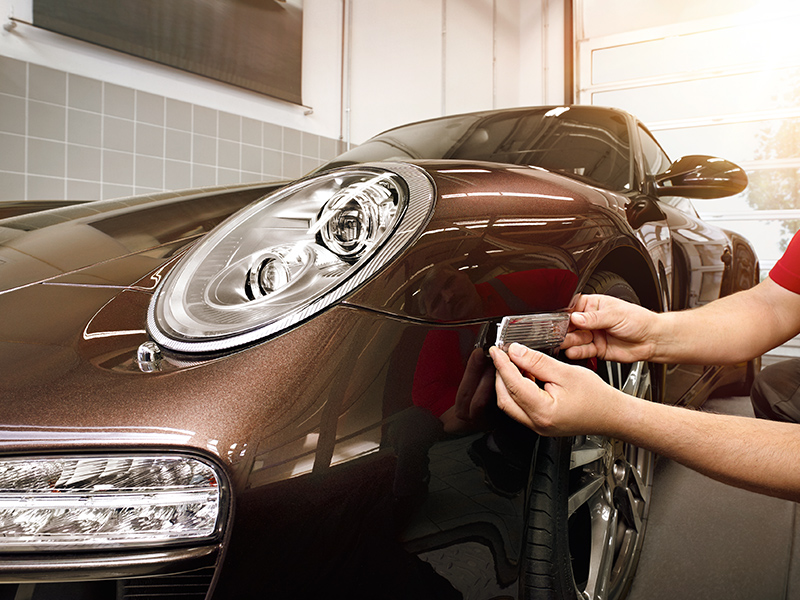Porsche Approved Collision Centers
Lightweight repair expertise
Continuous development also applies to lightweight bodies and lightweight bodyshell repair.
Example 911 (Type 991): compared to the Type 997, the number of welding points has been reduced by around 50%. More than 2,000 punched rivets are now used (Type 997: 0), together with over 120m of adhesive joints (Type 997: 12m).
One of
This revolutionary multi-material body technology means that bodyshell repair for new
If they're damaged, new vehicle technologies require new diagnostic and repair procedures. Because the new materials and assembly methods also make the repair more challenging. In the case of traditional steel bodies, the diagnostics are carried out using gauges on the straightening bench, whilst multi-material mix bodies are measured digitally – using extremely low measuring tolerances. And welding is also no longer the leading assembly method. It is increasingly being replaced by bonding and riveting.
When repairing Porsche vehicles, we're not concerned with quantity, but with quality.
So with all this complexity, who better to perform these repairs than those who designed and built the vehicles?
After all, we have no lack of expertise. We have over 70 years' experience in repairing
To ensure that the adhesives used on structural components can harden, all
Incidentally: your
Usual practice among PACCs is to invoice your insurance company directly. However, confirm with your authorized




![[+]](https://files.porsche.com/filestore/image/multimedia/none/porscheservice-serviceandorgininalparts-repaircompetence-lightweight-911/normal/2c38102b-e384-11e4-a2ef-001a64c55f5c/porsche-normal.jpg)
